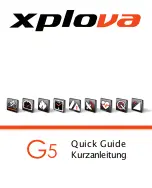
130
?
Everything changes when you ride on loose surfaces or in wet weather. Tire adhesion is reduced, so the wheels have less
cornering and braking traction and can lock up with less brake force. Moisture or dirt on the brake shoes reduces their ability to
grip. The way to maintain control on loose or wet surfaces is to go more slowly to begin with.
2. Adjusting your brakes
If either brake lever on your bike fails the Mechanical Safety Check you can restore brake lever travel by turning the brake
cable adjusting barrel counterclockwise, then lock the adjustment in by turning the barrel’s lock nut clockwise as far as it will go.
If the lever still fails the Mechanical Safety Check, or you have any question about whether your brakes are working properly
have your dealer check the brakes.
D. Shifting
Your multi-speed bicycle will have a derailleur drivetrain, an internal gear hub drivetrain or, in some special cases, a
combination of the two.
1. Why all those gears?
You will get the greatest fitness benefit, produce the greatest sustained power and have the greatest endurance if you learn to
spin the pedals at high revolutions per minute (called cadence) against low resistance. You will get the least fitness benefit and
have the least endurance by pushing hard on the pedals against heavy resistance.
The purpose of having multiple gears on a bicycle is to let you chose the gear that allows you to maintain your optimum
cadence under the widest range of riding conditions. Depending on your fitness level and experience (the more fit, the higher
the cadence), optimum cadence is between 60 and 90 pedal revolutions per minute.
2. Shifting a derailleur drivetrain
If your bicycle has a derailleur drivetrain, the gear-changing mechanism will consist of:
a rear sprocket cluster, called a freewheel or freewheel cassette
•
a rear derailleur
•
Usually a front derailleur
•
One or two shifters
•
One or two control cables
•
One, two or three front sprockets called chainrings
•
A drive chain
•











































